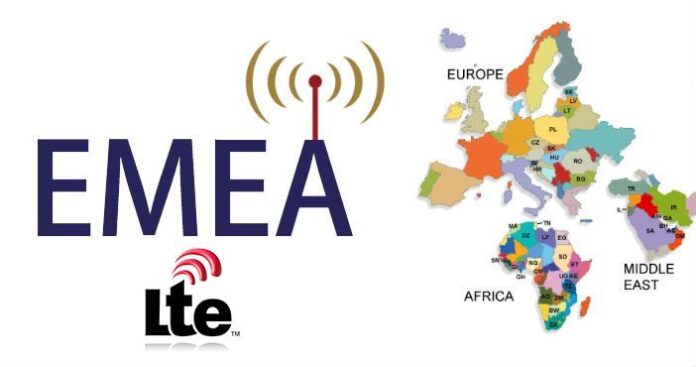LTE has been quietly growing in the Middle East. The lack of big announcements and headlines does not mean there’s been a lack of deployments — at least in the Gulf Cooperation Council countries.
Every single carrier in the GCC, which is made up of Bahrain, Kuwait, Oman, Qatar and Saudi Arabia, now has at least one LTE network. The last straggler was Vodafone Qatar, which launched LTE in June.
Of course, the situation is dramatically different in the non-GCC region, which includes war-torn nations such as Iraq and Syria, and the heavily sanctioned Iran. Despite the security challenges, operators are still active in these countries, but they are more focused on building out 3G, not LTE.
The GCC has more stable markets as well as high disposable income and smartphone penetration, which by some counts is 60% to 70%. Here, the potential for LTE adoption is huge, although significant growth may take some time, according to Kerem Arsal, Pyramid’s research manager for Africa and the Middle East.
Arsal predicts that LTE subscriptions will grow to 30 million in the GCC by 2018. “That’s quite a lot, but it is also quite a lot of time to come,” he said.
Since many GCC operators don’t separate 3G and 4G in their offers, it also makes it difficult to count a subscription as strictly LTE, which might explain some of the silence around its growth in the region. However, the combined packages could facilitate a future switch to LTE.
“The transition to LTE is much easier in the GCC compared to more developed markets where they are charging a premium for LTE and keeping the markets separate,” Arsal said. The Pyramid analyst expects that 3G subscriptions will peak in 2016, and then LTE will start to take off.
The demand for LTE in the GCC
When Zain Kuwait launched nationwide LTE in 2013, within six months, it had more than 9% of its subscribers on the next generation technology. Compared to some European countries that are still in the 2% to 3% range, that’s impressive. And with a 20% population penetration for LTE in the first quarter of 2014, Kuwait is now among the top 10 most penetrated markets globally, according to an Ovum metrics report.
The report also found that LTE subscriptions in the Middle East increased by 174% year on year, to 3 million as of the second quarter of 2014. There have been a total 17 LTE deployments across the region.
STC, the largest telecom in the region’s largest market of Saudi Arabia, has the most LTE subscriptions at 730,000, but this is relatively low when compared to their 17 million 3G subscriptions. And in the region’s second largest market, the United Arab Emirates, the story is similar. The leading operator Etisalat has about 271,000 LTE subscriptions, a small portion compared to its 5.4 million on 3G.
Mai Barakat, Ovum senior analyst for the MENA region, doesn’t see a huge demand for 4G in the immediate future, partly because of the lack of LTE-enabled handsets and partly because 3G is already filling a lot of the demand.
“Most people won’t purchase LTE because of the speed,” Barakat said. “It’s more that they want the prestige of having the LTE packet. That’s probably why it’s not picking up as quickly. There isn’t a demand that isn’t being met by 3G — 4G is more of luxury thing to have.”
Barakat also noted that among the customers who do go for LTE, it’s not always for their phones. Fixed broadband is low in many markets, and so customers will often purchase a USB stick with LTE to use on their computers at home.
LTE pushes data use
Yet, once started, LTE seems to sell itself, or at least to sell more data. When Zain Kuwait saw its dramatic increase in LTE users within six months, it also saw a dramatic increase in data use with LTE customers using almost four-times as much data as its other customers.
STC also witnessed a huge data traffic increase in 4G in the first half of 2014, according to its second quarter report. The monthly data volume on STC’s 4G networks surpassed its 3G and 2G networks combined by 9%.
With or without LTE, the Middle East and Africa is expected to have the strongest mobile data traffic growth of any region in the world, with a 70% compound annual growth rate between 2013-2018, according to Cisco. In 2013, the mobile data traffic more than doubled, growing 107%. Cisco also forecasts that 4G uptake will grow exponentially in MEA, moving from 3.65 million connections in 2013 to 86.58 million by 2018.
In preparing for that growth, Middle Eastern operators run up against a similar problem that many carriers have in other developing regions: spectrum availability. Right now in the GCC, most LTE deployments are in the 1800 MHz bands and above. The sub-1 GHz frequencies, ideal for urban and rural LTE deployments, are not yet available. The one exception is in Qatar, a country that has set an ambitious goal to become one of the most connected countries in the world by 2030. Two carriers, Vodafone and Ooredoo, have launched LTE on the 800 MHz band in Qatar.
When the sub-1 GHz spectrum will become available in other markets is unclear at the moment, but Pyramid’s Arsal has no doubt that every GCC country is talking about it. “I’m sure it’s on everyone’s agenda,” he said.
While LTE in the region is relatively low now, the GCC’s quiet growth is well worth watching because once that spectrum is released — and enabled devices become more widespread — LTE adoption in these markets will skyrocket.
Want to know more about LTE in the EMEA region? See our latest reports on LTE in Europe and Africa.

